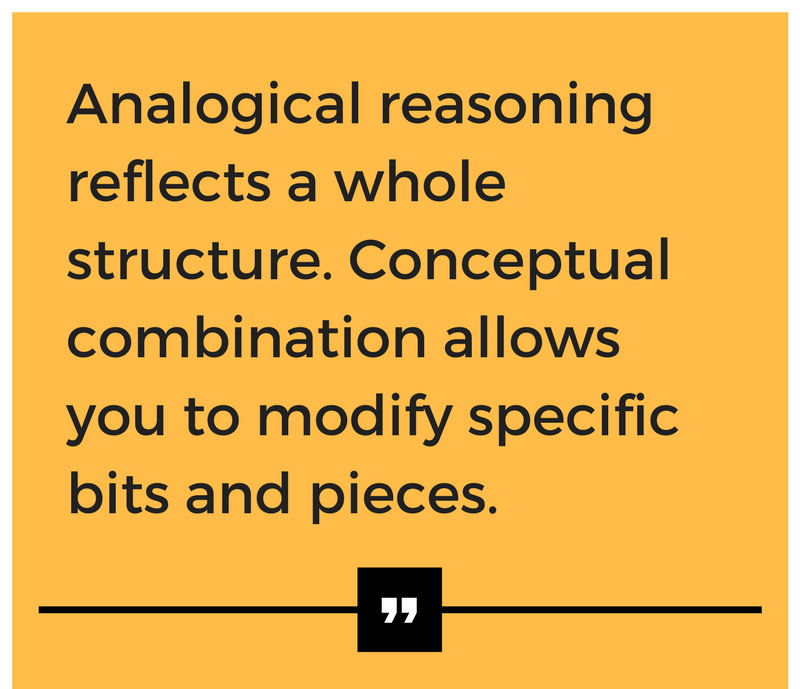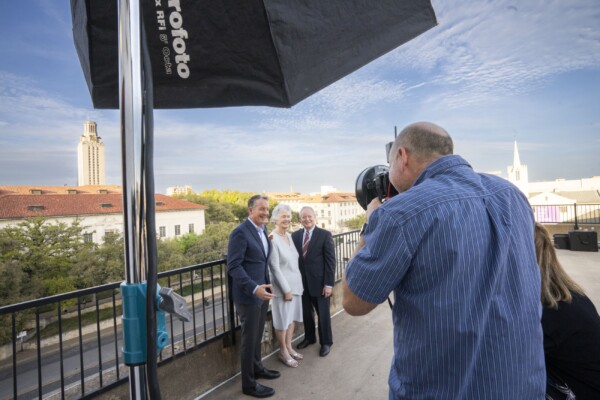Business Genius Can Be Borrowed
Research rooted in cognitive psychology explains how bold, new business models are often copied from other industries.
By Steve Brooks

When Elon Musk was looking to overturn the business models of the auto industry, one of his crucial inspirations was not a car but a computer. Musk has described the all-electric Tesla Model S sedan as his Macintosh.
As different as they might appear, both products faced the same basic challenge, says Professor Luis Martins, director of the Herb Kelleher Center for Entrepreneurship, Growth, and Renewal at McCombs. “At its core, Tesla was dealing with the question, ‘How do you go up against the dominant technology?’ Apple was going up against Intel and Windows machines.”
Like Apple, he says, Tesla’s answer was to compete not on price or functions, but on aesthetics. It created a cult following through obsessive attention to upscale design, from aerodynamic lines to pop-out door handles. It added cachet by building its own network of showrooms — designed by none other than the man who had masterminded the Apple Store.
Call it a case of creative copying. In new research, Martins and former McCombs colleagues Violina Rindova and Bruce Greenbaum find that some of the boldest business models of recent years have been borrowed from other industries.

What’s more, they say, such extreme innovation doesn’t require the genius of an Elon Musk. Instead of the traditional understanding of new business models — as reactions to economic forces — they use concepts from cognitive psychology, which analyzes the structures of everyday thinking. With that framework, they lay out a visioning process anybody can follow to create new business models.
“We wanted to provide reliable examples of processes that are based on a solid psychological foundation,” says Rindova, now chair in strategic entrepreneurship at the University of Southern California Marshall School of Business. “There’s no way to take creativity out of the business innovation process, but we wanted to provide a bit of scaffolding.”
Method 1: Cloning
According to cognitive psychology, what we call creativity is actually the process of reorganizing old models into new ones. Says Martins, “To come up with a whole system of meaning from scratch is quite difficult for the human mind.” Borrowing concepts and applying them in new ways, however, isn’t.
He and his colleagues focus on two common methods for doing just that. One is called analogical reasoning — as in making analogies or comparisons — and it maps the structure of a whole system from one realm to another, as from Apple to Tesla.
As another example, take Aravind Eye Care, a chain of 11 nonprofit hospitals in India. When founder Dr. Govindappa Venkataswamy wanted to cut the cost of cataract surgery for low-income patients, he took his template from a pioneer of fast food: McDonald’s. He went so far as to attend the company’s Hamburger University in Oak Brook, Illinois.
“What he borrowed were processes for standardization, cost reduction, and ensuring quality,” Martins says. “But he made sure to tailor them to eye care.”
Like a McDonald’s kitchen, Aravind’s operating rooms are set up for efficiency. Each has two tables. While one patient goes under the knife, nurses are prepping the next one on the other table. When the first operation is done, the doctor turns around, sterilizes hands, and starts the second procedure.
The trick in analogical reasoning is to pinpoint your chief problem, then look for a business that’s already solved it, says Martins. That’s also the chief stumbling block. “You have to be careful what problem you’re trying to solve,” he says. “If you get that wrong, you pick the wrong analogy.”
As an analogy gone bad, he points to Better Place, an Israeli electric car company that tried to emulate cellular carriers. Just like cell phone customers add new minutes, they designed a model where car customers would load new miles as their electric batteries depleted their charge. The plan was to swap out batteries every 100 miles at charging stations, which were dispersed like a network of cell towers.
After six years, though, the company folded. It turned out that stations were twice as expensive to build as cell towers and that long-distance drivers found it inconvenient to seek them out. “The key flaw in the analogy was that miles don’t just come to you, like minutes on a phone,” Martins says. “Acquiring miles involves the effort of driving to a station and getting your battery changed.”
Method 2: Combining
When Howard Schultz reinvented a once-small Seattle coffee chain in the late ’80s, he didn’t import an entire model from another industry. Instead, he plugged in elements from several different sources — a process the researchers call conceptual combination.
One source was the neighborhood bar, where people socialized over mixed drinks. Schultz’s Starbucks mimicked that and dubbed its counters “coffee bars,” and the bartender became the barista, a job title borrowed from Italian cafes. Says Rindova, “They originally trained baristas to remember the names of all their regulars, to remember their drinks and how to customize their drinks.”
For ambiance, however, Schultz borrowed not from bars but from art galleries, hanging java-themed paintings and photos. He added in ideas from specialty retailers, too, by selling beans with brewing tools and accessories.
That sort of mixing and matching is the essence of conceptual combination, Rindova says. “Analogical reasoning reflects a whole structure. Conceptual combination allows you to modify specific bits and pieces.”

A Checklist for Creativity
Can any CEO develop innovative business models in the same vein as a Steve Jobs or a Herb Kelleher? The answer is yes, the researchers say. They suggest a four-step process for applying both analogical reasoning and conceptual combination:
- Choose a business concept you’d like to copy.
- Compare it to your company; see what’s similar and what’s different.
- Select which elements to borrow.
- Modify them to fit your business context.
The process is not just theoretical. Both Rindova and Martins use it in their teaching. In one of Martins’s classes, students borrowed an analogy from the dating app Tinder and applied it to the problem of finding tennis partners.
To him, that’s the beauty of both types of reasoning: Anyone can use them. “You don’t have to wait for ideas to strike out of the blue,” Martins says. “You could use this process to come up with hundreds of ideas. It’s a structured process for thinking outside the box.”
Unlocking the Hidden Value of Concepts: A Cognitive Approach to Business Model Innovation appears in the Strategic Entrepreneurship Journal.
Originally published at www.texasenterprise.utexas.edu on March 14, 2017.
http://www.texasenterprise.utexas.edu/2017/03/14/how/business-genius-can-be-borrowed


